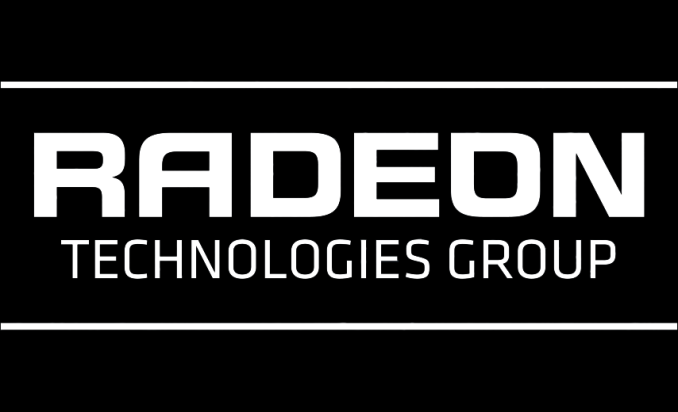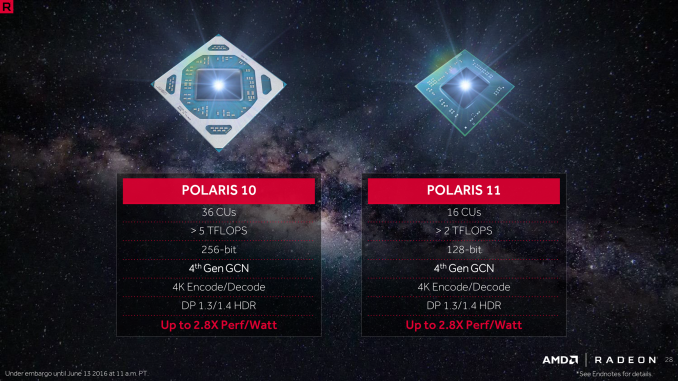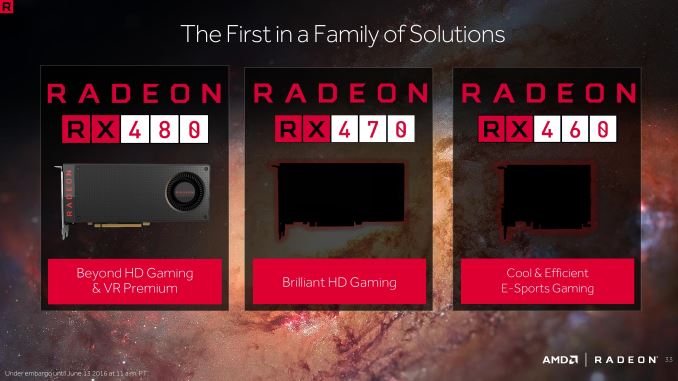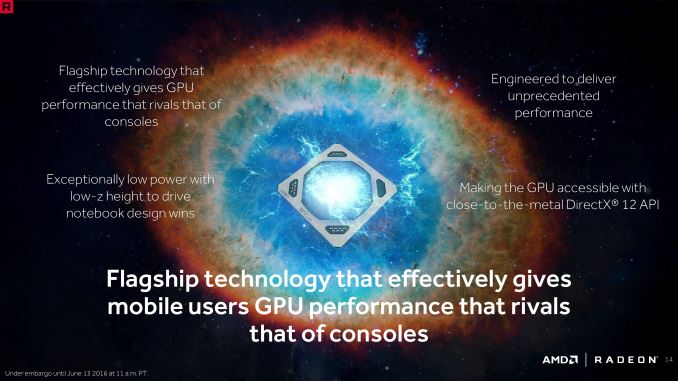A Bit More on AMD’s Polaris GPUs: 36 & 16 CUs
by Ryan Smith on June 15, 2016 8:30 AM EST
Along with this week’s teaser of the forthcoming Radeon RX 470 and RX 460 at E3, AMD also held a short press briefing about Polaris. The bulk of AMD’s presentation is going to be familiar to our readers who keep close tabs on AMD’s market strategy (in a word, VR), but this latest presentation also brought to light a few more details on the company’s two Polaris GPUs that I want to quickly touch upon.
First and foremost, AMD’s presentation included a slide with pictures of the two chips, and confirmation on their full configurations. The larger Polaris 10 is a 36 CU (2304 SP) chip, meaning that the forthcoming Radeon RX 480 video card is using a fully enabled chip. Meanwhile the smaller Polaris 11 (note that these pictures aren’t necessarily to scale) packs 16 CUs (1024 SPs). This puts it a bit below Pitcairn (20 CUs) before factoring in GCN 4’s higher efficiency. Meanwhile as is common for these lower-power GPUs, AMD’s slide also confirms that it features a 128-bit memory bus.
AMD is expecting Polaris 11 to offer over 2 TFLOPs of performance. Assuming a very liberal range of 2.0 to 2.5 TFLOPs for possible shipping products, this would put clockspeeds of a high-end Polaris 11 part at between 975MHz and 1220MHz, which is similar to our projections for RX 480/Polaris 10. Note that AMD has not yet announced any specific product using Polaris 11, however as we now know that RX 470 is a Polaris 10 based card, it’s safe to assume that RX 460 is Polaris 11, and the over-2 TFLOPs projection is for that card.
Second, briefly mentioned in AMD’s press release on Monday was the low z-height of at least Polaris 11, and it pops up in this slide deck again. There was some confusion whether z-height referred to the laptop or the chip, but the slide makes it clear that this is about the chip. So it will be interesting to see how thin Polaris 11 is, how that compares to other chips, and just what manufacturers can in turn do with it.



















98 Comments
View All Comments
Ken_Masters - Thursday, June 16, 2016 - link
Litterally if you have any other task than watching videos an intel gpu is insufficient unless its the new one on intels $700 gpu that performs worse than AMDs cheast APU offerings.Michael Bay - Thursday, June 16, 2016 - link
You have to be a truly insane AMD drone to believe Iris Pro is not ripping current APUs a new one.Alexvrb - Thursday, June 16, 2016 - link
GT3e+ don't come cheap. Once you get into those leagues dGPU (mobile or otherwise) is quite a good option too. :Pquilciri - Thursday, June 16, 2016 - link
I think you're under the mistaken impression that Home Theater PC's are only for video. Manay people, myself included, use it for gaming. I have lots of local co-op games from steam installed on mine and I play with xbox360/steam controllers.Given that your living room probably has more space, this will be alikely location for Occulus Rift/ HTC Vive owners, in which case the HTPC will need to be a beefy gamer.
monstercameron - Thursday, June 16, 2016 - link
intel skylake afair doesnt have hw hevc or vp9 support.tamalero - Tuesday, June 28, 2016 - link
Do they fully support?I still have nightmares of the horrible intel gpu drivers and their useless "accelerations" that caused bsods or graphic artifacts all the time.
damianrobertjones - Wednesday, June 15, 2016 - link
"guarantees compatibility with 8K display"Nope. By the time they arrive a new cable standard will be adopted ensuring older stuff no longer works without x or y. You gotta' make the $$$$ if you're a company.
MobiusPizza - Wednesday, June 15, 2016 - link
Erm no, that's what standards are for. This card supports DP 1.4 standard and by definition it will support 8k display. Yes it may require a new cable, but that shouldn't set you off more than few tens of bucks.nathanddrews - Wednesday, June 15, 2016 - link
DP1.4 supports 8K60/10-bit/HDR and 4K120/10-bit/HDR.nathanddrews - Wednesday, June 15, 2016 - link
Although it's always possible the GPU itself can't output 8K. There could always be some frame buffer limitation that prevents it from exceeding 5K or something... I guess we'll find out in a couple years.